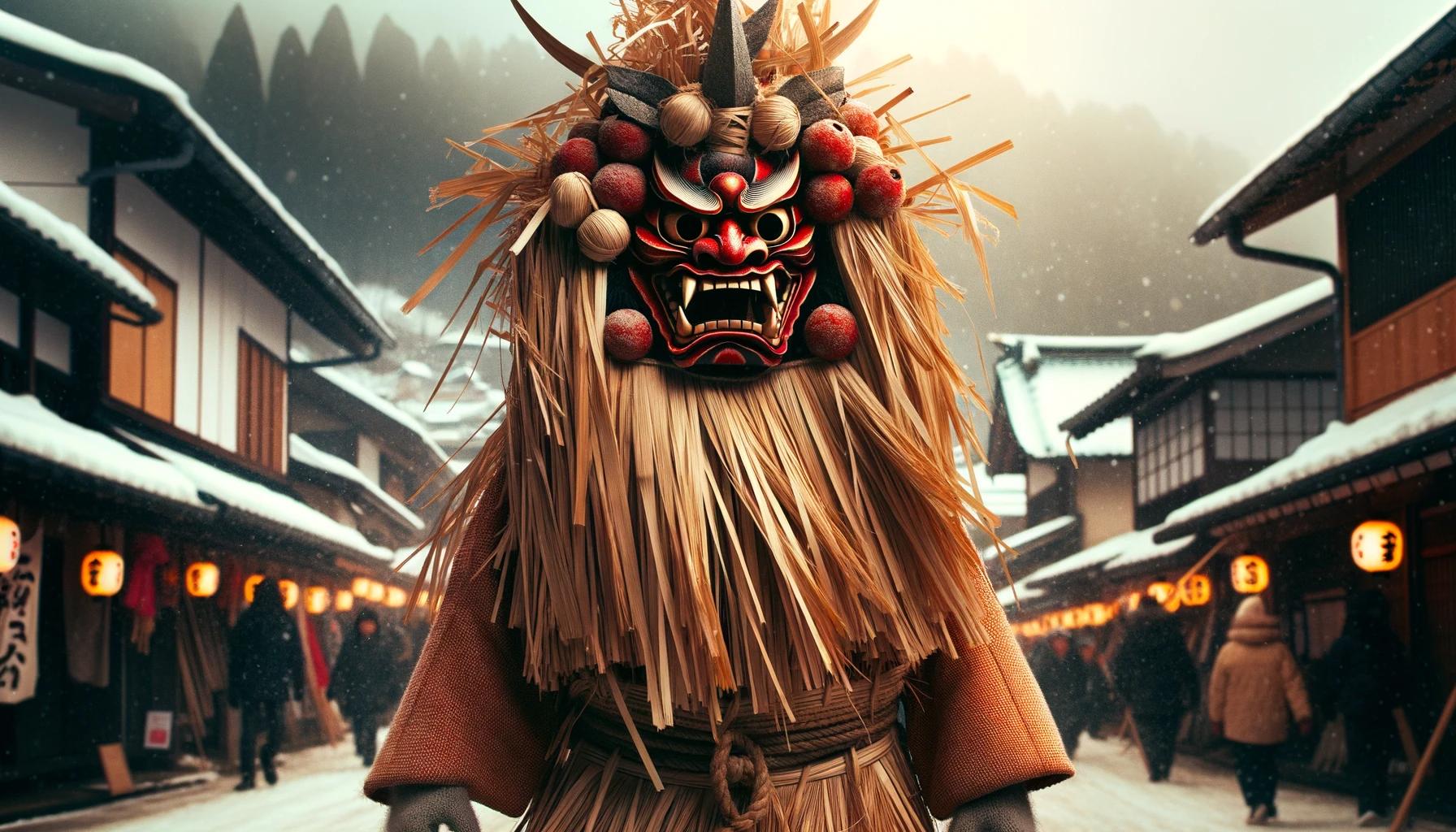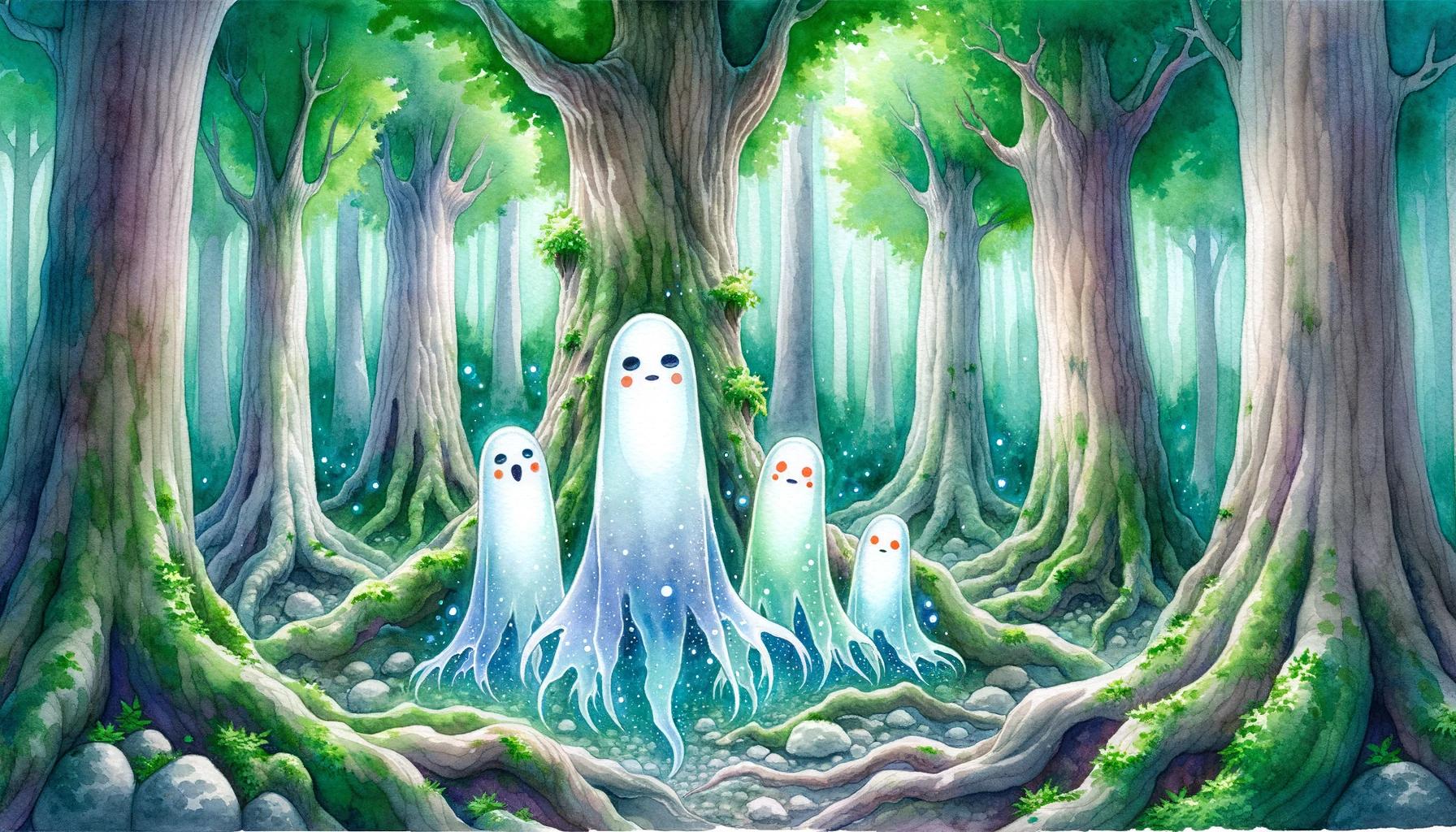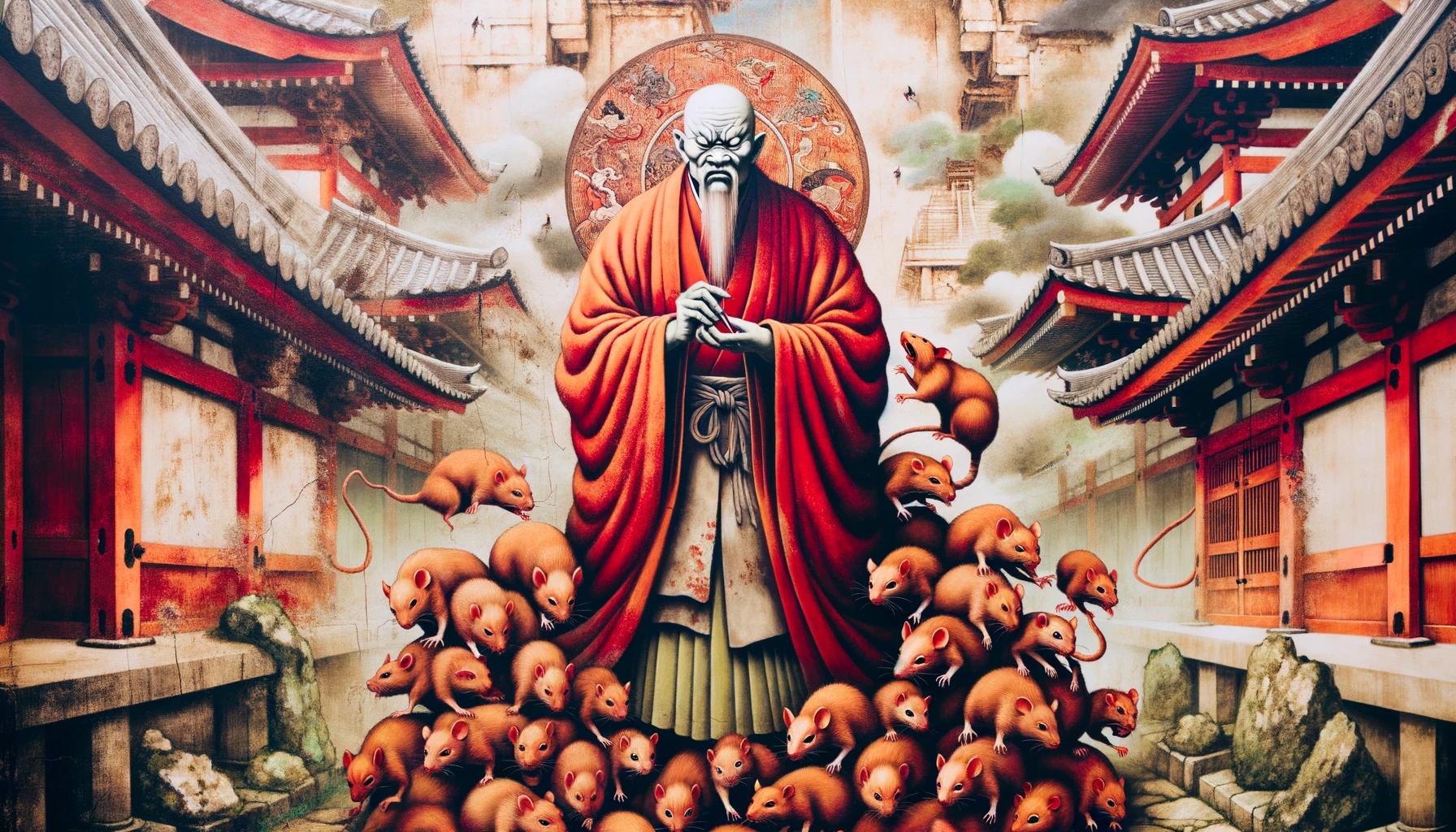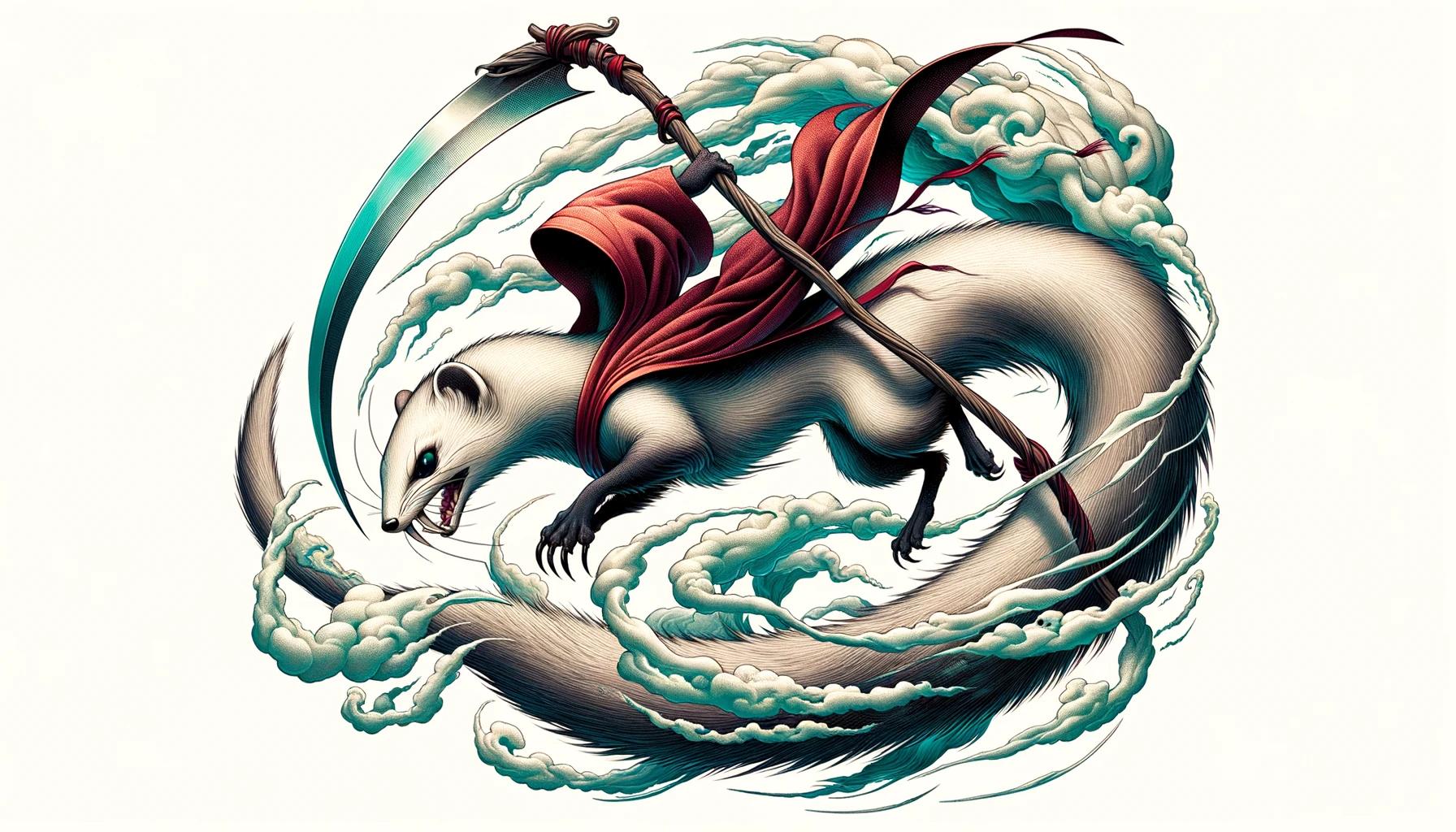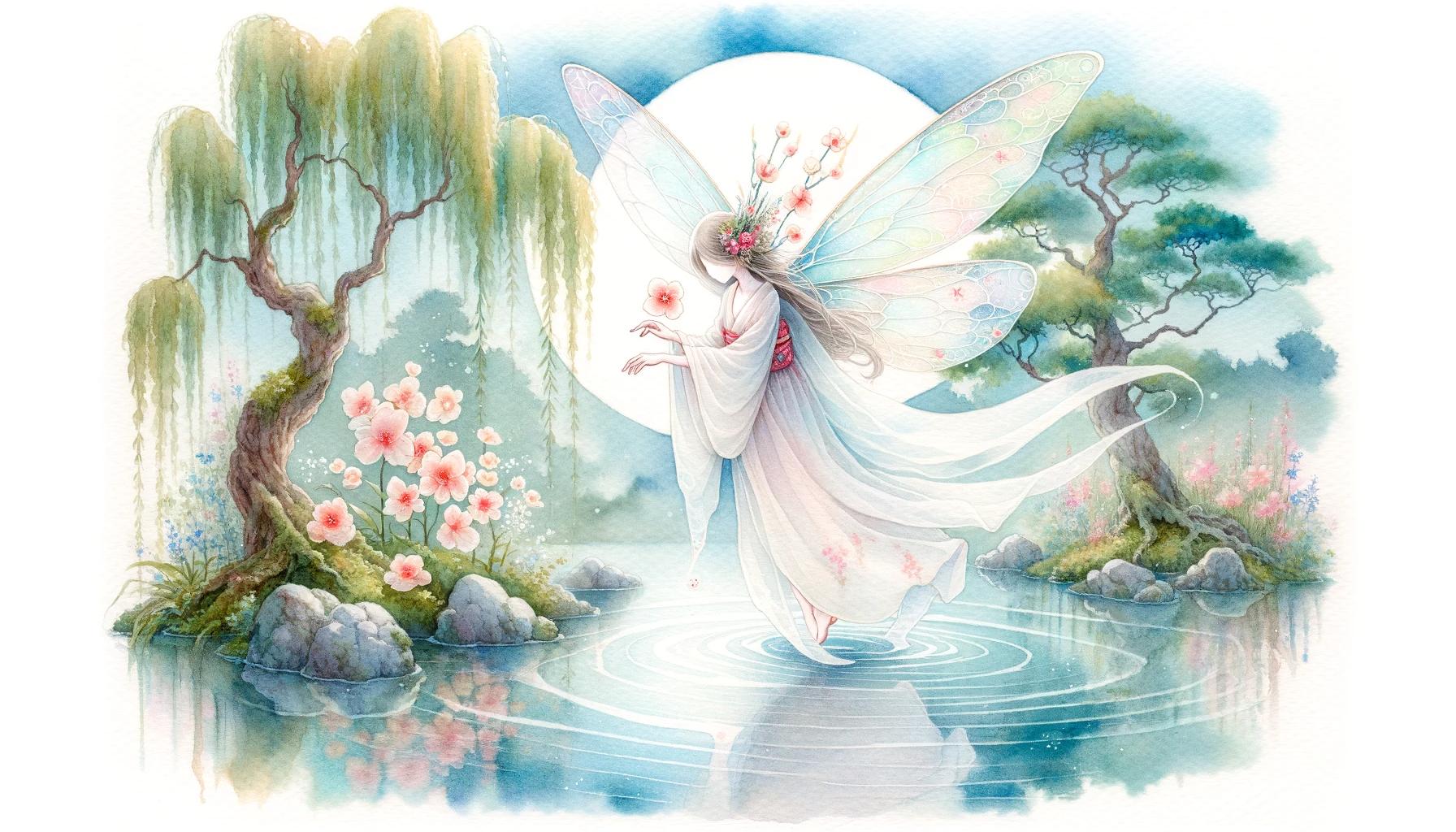Japanese Namahage Yokai: Demonic Beings of Japan’s Coastal Mountains
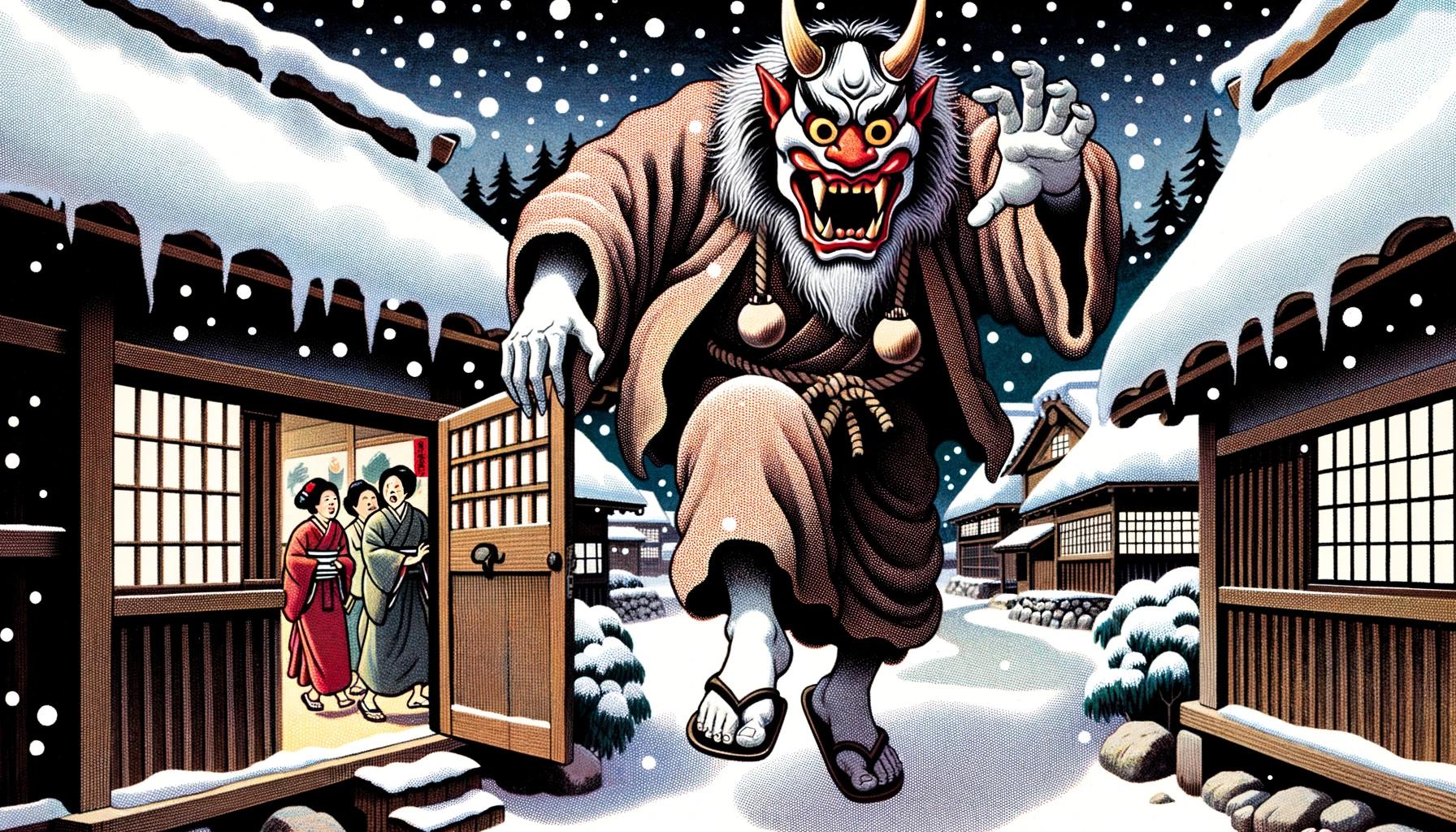
The Japanese Namahage yokai are demonic beings residing in the coastal mountains of Japan’s Oga region in Akita Prefecture. During the annual New Year’s ritual, men don masks, straw capes, and carry large knives or axes to depict these fearsome creatures.
Although their appearance may be terrifying, the Namahage are actually well-intentioned yokai, serving as messengers of the gods to warn and discipline those who have been lazy or wicked. This tradition originated from the ancient practice of warding off evil spirits and purging accumulated negativity.
Origins and Legends of Japanese Yokai
Japanese folklore is rich with tales of supernatural creatures known as Yokai. These beings hold immense significance in Japanese culture and are believed to embody various aspects of the human experience and natural world.
One prominent Yokai that captures attention is the Namahage, a yokai with a demonic appearance.
Introduction to Yokai and their significance in Japanese folklore
Yokai are often described as spirits or monsters that inhabit the realm where the material and spiritual worlds intersect. They come in various forms, embodying elements of nature, animals, or objects, and are known to possess both benevolent and malevolent traits.
The Namahage: A Yokai with a Demonic Appearance
Among the numerous yokai, the Namahage stands out for its fearsome and demonic appearance. Represented by men adorned in masks and straw capes, the Namahage instills both curiosity and terror in those who witness their presence.
With their bright red or blue skin, wild hair, sharp teeth, and horns on their foreheads, they evoke a primal sense of fear.
Cultural Significance and Rituals Surrounding the Namahage
The Namahage holds great cultural significance in Japanese folklore and traditions. They are believed to serve as divine messengers sent by the gods to warn and punish individuals who have been lazy or wicked.
The Namahage descend from the mountains during the koshōgatsu, the first full moon of the New Year, and visit homes, particularly targeting young children and newlywed brides.
The rituals associated with the Namahage serve a dual purpose.
On one hand, they scare away evil spirits and cleanse the community of negativity accumulated during the previous year. On the other hand, they act as a reminder for individuals to reflect on their actions and strive for better behavior in the coming year.
During the Namahage visitations, villagers offer them food and drink to appease their spirits. This exchange symbolizes a mutual understanding between the community and the yokai, fostering the belief that the Namahage bring blessings and protection if properly respected.
The Namahage tradition has transformed over time, evolving into a cultural celebration that attracts tourists and locals alike. Festivals and museums dedicated to the yokai showcase the enduring fascination and pride in this unique aspect of Japanese folklore.
- Oga: The Region Where the Namahage Yokai Resides
- Historical Background and Evolution of the Namahage Tradition
- Namahage Descending from the Mountains: Koshogatsu and New Year Rituals
The Namahage Yokai Tradition in Oga, Akita
Oga: The Region Where the Namahage Yokai Resides
Oga is a fascinating region located in Akita Prefecture, Japan, known for being the home of the legendary Namahage yokai.
Nestled in the coastal mountains near the northern shores of the Sea of Japan, Oga provides the perfect backdrop for the rich folklore and traditions surrounding these demonic beings.
Historical Background and Evolution of the Namahage Tradition
The Namahage tradition in Oga dates back centuries and has evolved through the passage of time.
Its roots can be traced back to ancient rituals aimed at warding off evil spirits and purging negativity from the community. Over the years, the tradition has become more structured and ritualistic, embedding itself firmly within the cultural fabric of the Oga region.
Namahage Descending from the Mountains: Koshogatsu and New Year Rituals
One of the most significant aspects of the Namahage tradition is the dramatic annual descent of these yokai from the mountains. This occurs during Koshogatsu, the first full moon of the New Year.
As night falls, the Namahage make their way to the villages, visiting households, and instilling a mix of terror and excitement among the residents.
Koshogatsu marks the beginning of the New Year, and the presence of the Namahage serves as a reminder for the community to reflect on their past actions.
These demonic figures symbolize messengers of the gods, sent to warn and punish those who have been lazy or wicked throughout the year. The Namahage’s arrival is met with a combination of fear and respect, as they fulfill their role as guardians of tradition and purveyors of order.
The New Year rituals involving the Namahage not only serve as a reminder of the importance of discipline and hard work but also foster a sense of unity and community spirit.
By embracing the Namahage tradition, the people of Oga keep their cultural heritage alive and pass it on to future generations.
- Oga: The Region Where the Namahage Yokai Resides
- Historical Background and Evolution of the Namahage Tradition
- Namahage Descending from the Mountains: Koshogatsu and New Year Rituals
The Appearance and Attributes of Namahage Yokai
The Namahage yokai possess distinct physical features and attire that contribute to their terrifying presence during rituals and activities.
Understanding their appearance and symbolism allows for a deeper appreciation of their role in Japanese folklore and tradition.
Description of Namahage’s Physical Features and Attire
Namahage are represented by men dressed in straw capes, leggings, and coats. Their masks, made of wood or lacquer, depict ferocious faces with wild hair, wide mouths lined with sharp teeth, and prominent horns on the forehead.
The combination of these features creates a menacing and otherworldly appearance.
Symbolism Behind the Red or Blue Skin, Wild Hair, and Horns
The choice of vibrant red or blue skin color for Namahage serves as a striking visual representation. The red skin symbolizes aggression, power, and passion, while the blue skin represents calmness, wisdom, and supernatural nature.
The wild hair adds to their savage demeanor, suggesting a connection to untamed spirits. The horns signify strength, authority, and the supernatural origin of the yokai.
The Role of Masks, Capes, and Weapons in Namahage’s Presentation
Masks play a crucial role in the Namahage’s presentation, effectively concealing the human identity and enhancing the transformative illusion.
The exaggerated facial features accentuate their demonic qualities, emphasizing their role as supernatural beings. The straw capes and coats not only contribute to their intimidating appearance but also symbolize their mountain-dwelling origin and connection to agricultural traditions.
The large knives or axes carried by Namahage hold symbolic significance. These weapons represent their authority and ability to purify by cutting away negative elements and driving away evil spirits. They serve as powerful tools of protection and reinforce the belief in their divine mission.
The Namahage’s Intention and Interaction with the Community
The Namahage yokai, with their fearsome appearance, provoke both fear and protection within the community. Their role as messengers of the gods is propitious and vital in the context of Japanese folklore and traditions.
The Perception of Fear and Protection by the Namahage
When the Namahage descend upon the village during the Koshogatsu festival, their fierce demeanor can be intimidating. The sight of these demonic beings with their sharp teeth, wild hair, and ominous horns may instill a sense of fear in the villagers, particularly among the young and newlywed couples.
However, this fear is not without purpose.
The Namahage’s intimidating presence serves as a protective mechanism. By embodying the fearsome and ferocious, they safeguard the community from malevolence and ward off evil spirits.
Their intention is not to harm but rather to serve as a warning, ensuring that individuals strive to be diligent and virtuous throughout the year.
The Propitious Role of Namahage as Messengers of the Gods
The Namahage yokai are not merely harbingers of fear; they also hold a significant role as messengers of the gods.
Sent down from the mountains, they carry the divine mandate to uphold justice and discipline among the people. With their visits, they remind individuals of the consequences of laziness and wickedness, motivating them to be better versions of themselves.
As messengers of the gods, the Namahage play a crucial part in the spiritual fabric of Japanese culture. Their appearance and actions may be intimidating, but their purpose is ultimately benevolent, ensuring the community’s well-being and justice.
Community Engagement: Namahage’s Interactions with Children and Newlyweds
The Namahage’s ritual visitations also involve meaningful interactions with children and newlywed couples. While the sight of these demon-like beings can be scary, it is an essential experience for young children, teaching them important life lessons about discipline and the consequences of laziness or wrongdoing.
Moreover, newlyweds are particularly targeted by the Namahage, as their arrival symbolizes a transition into a new chapter of life. By confronting the fear and receiving the guidance of the Namahage, the newlyweds are believed to be blessed and protected in their marriage.
This interaction demonstrates the communal bond and the belief in the power of tradition and folklore to shape and guide individuals within the community.
Cultural Significance and Modern-Day Celebrations
The cultural significance of the Namahage yokai tradition extends beyond its historical roots, with modern-day celebrations keeping the tradition alive and cherished in Japanese society. These celebrations highlight the enduring fascination with yokai folklore and serve as a testament to the country’s rich cultural heritage.
Namahage Sedo Festival: A Major Event Celebrating the Yokai Tradition
One of the prominent events that showcase the Namahage yokai tradition is the Namahage Sedo Festival. Held annually in Oga, Akita, this festival draws locals and tourists alike to experience the power and mystique of the Namahage.
During the festival, villagers dress up as Namahage, donning the fearsome masks and straw capes, and perform rituals to ward off evil spirits and bring blessings for the coming year.
Visitors can immerse themselves in the lively atmosphere as they witness the Namahage procession, hear the rhythmic sounds of traditional music, and indulge in local delicacies.
The Namahage Sedo Festival serves as an opportunity for the community to come together, celebrate their heritage, and pass down the traditions to future generations.
Namahage Museum: Preserving the Heritage and Stories of the Yokai
A significant effort has been made to preserve the heritage and stories surrounding the Namahage yokai through the Namahage Museum.
Located in Oga, this museum showcases a collection of masks, costumes, and artifacts related to the Namahage tradition. Visitors can explore the exhibits, learn about the mythology and history of the Namahage, and gain a deeper understanding of its cultural significance.
The Namahage Museum provides a platform for cultural education and appreciation, ensuring that the traditions and tales of the Namahage yokai continue to be treasured and protected for future generations.
Namahage in Contemporary Japanese Society: Entertainment and Tourism
Beyond the traditional festivals and museums, the Namahage yokai have also found their place in contemporary Japanese society.
They have become popular figures in entertainment and tourism, captivating audiences with their otherworldly presence.
Visitors can often witness Namahage performances and theatrical portrayals in various cultural events or even in theme parks.
This allows both locals and tourists to witness the awe-inspiring and mythical essence of the Namahage firsthand.
The Namahage yokai tradition has also become a source of tourism, attracting enthusiasts from around the world.
Travelers have the opportunity to visit Oga and immerse themselves in the rich folklore, participating in workshops, and experiencing the spirit of the Namahage. This cultural exchange fosters a deeper appreciation for Japanese traditions and folklore.
- Experience the power and mystique of the Namahage in Oga’s annual Sedo Festival
- Explore the Namahage Museum to delve into the mythology and history of the yokai
- Witness Namahage performances and theatrical portrayals
- Immerse yourself in the rich folklore of Oga and participate in workshops
The Namahage yokai continue to thrive in modern-day Japanese society, captivating people’s imaginations and serving as a vital link to the country’s cultural heritage.
.











